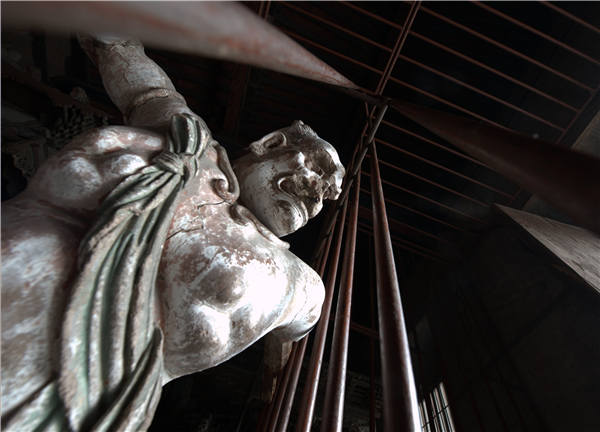 |
|
The colored statue at Shuanglin Temple in Pingyao city. [Photo provided to China Daily] |
Pingyao, Shanxi
Historians often say: Visit Shanxi if you want to see cultural relics above the ground.
Indeed, the province has many splendid legacies from before the Yuan Dynasty (1271-1368), incomparably more than any other province in China. However, the problem is that they are scattered throughout the province.
Traveling south from Datong to the middle of Shanxi, Pingyao is another popular tourist destination. Its well-preserved Ming Dynasty walls are an iconic image of China, and are also listed as a UNESCO World Heritage site.
Shuanglin Temple is usually not part of visitors' plans, even though it is part of the inscribed World Heritage site and only six kilometers from the city center.
The origin of Shuanglin Temple is unclear, but it is speculated that the temple may have existed for about 1,500 years. Passing through a small gate to enter the temple, I felt like I had fallen into a wonderland of sculptures.
Most of the sculptures are earthen and wooden figurines of Buddhist deities. Most date back 600 years. In the main hall, there are even 500-odd vivid statues with various gestures that comprise one-fourth of the statues in the temple. They retain their bright colors despite their long history.
The creators of these masterpieces are unknown, but visitors cannot help but admire their imagination and creativity.